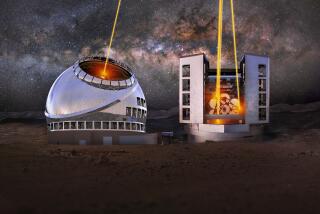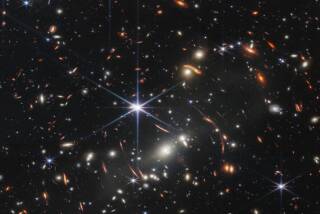Future of Keck Telescope
It is unfortunate that the headline accompanying your article on the W.M. Keck Observatory conveyed a misleading impression of the technical feasibility of the project (Science/Medicine, Jan. 30). The principal innovation in the Keck Telescope is the use of a primary mirror comprised of 36 hexagonal segments. With this approach, it became possible to consider building a telescope with four times the mirror area of the 200-inch Hale Telescope at the Palomar Observatory.
Judging from the many milestones accomplished to date, the future of the Keck Telescope looks bright. Our successes are numerous: At the observatory site, a newly completed dome stands ready to receive the telescope. The telescope structure is scheduled to be shipped this spring for installation. The support systems for the mirror segments are finished. Work on the mirror segments recently passed into the manufacturing stage, following a lengthy and successful period of developing tools, test equipment, and manufacturing procedures suitable for the unique requirements of the segmented-mirror design. Even with the delay in mirror development, we expect to begin operations in 1991, as scheduled, with a telescope that takes optimum advantage of the seeing conditions on Mauna Kea in Hawaii.
The use of a segmented mirror has been made possible by two new technologies that have been developed and demonstrated with prototype hardware by J.E. Nelson and his colleagues at the Lawrence Berkeley Laboratories. One of these involved the sensors and actuators needed to actively monitor and adjust the location of adjacent segments so that together they will form the surface of a single mirror 10 meters (400 inches) in diameter.
The other enabling technology is stressed mirror polishing, a process that uses the simplicity of spherical polishing techniques to produce the aspherical surfaces of the individual segments.
We are confident that the Keck Telescope will contribute to unprecedented astronomical discovery. By gathering faint light from the universe’s most distant regions, the telescope will help us piece together the very early history of the universe and so learn how galaxies formed. By bringing us views from the interiors of star-forming clouds, it will provide insight into how our solar system formed.
THOMAS E. EVERHART
President, Caltech






